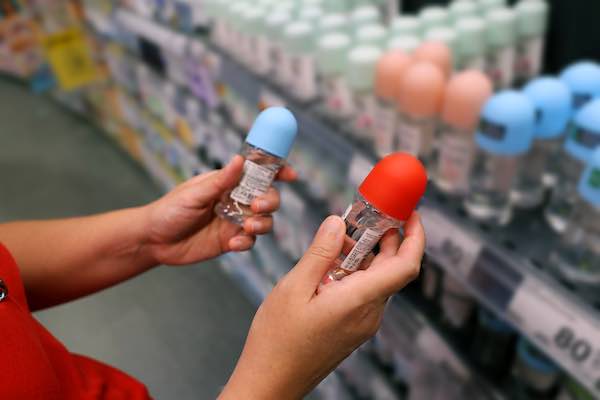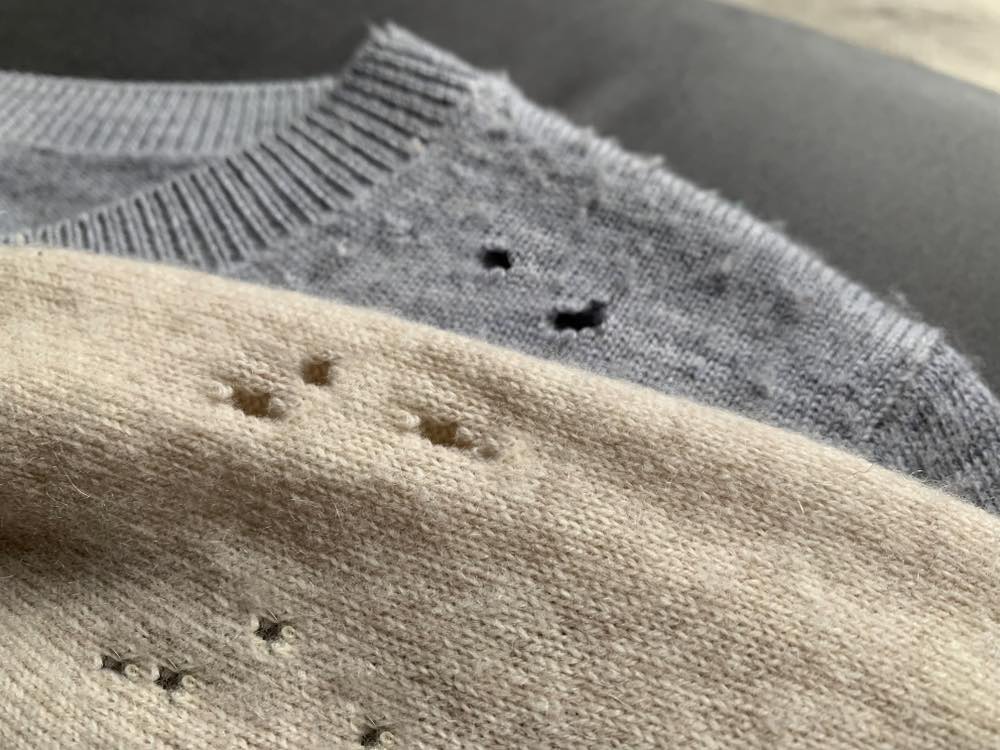The HIV/AIDS Epidemic Is Still with Us
- Details
- Written by: Dr. Gary Zeitlin
- Category: Health
 (Submitted by Dr. Gary Zeitlin, Infectious Disease at White Plains Hospital)
(Submitted by Dr. Gary Zeitlin, Infectious Disease at White Plains Hospital)
Fortunately, waves of major diseases rise and fall. This is most immediately apparent with COVID-19, which at its peak in 2021 caused over 2.5 million hospitalizations in the U.S. (and an associated 450,000 deaths) but by 2023 contributed to “only” about 900,000 hospitalizations and 75,000 deaths.
Although the numbers in the U.S. continue to decline, the World Health Organization (WHO) still considers COVID-19 to be a pandemic, given its ongoing strength in other parts of the world. Both WHO and the U.S. federal government ended their declarations of a public emergency in May 2023 – but that is hardly the same as saying the coronavirus is a thing of the past.
You may be surprised to learn that the same is true of the HIV virus, which can cause AIDS. First recognized as a new disease in 1981, AIDS is still considered to be a pandemic by WHO, and with good cause. New cases are on the decline, but that does not mean it has been defeated. During the past 40-plus years, most people have become more aware of the potential pitfalls of unprotected sex, and needle-sharing. Even so, we still see people living with HIV, as do hospitals across the country and throughout the world.
One invaluable tool against the HIV virus has been Pre-exposure prophylaxis (PrEP), a general term for using medications to prevent the spread of disease in people who have not yet been exposed to it, and Post-exposure prophylaxis (PEP), which reduces the risk of someone exposed to HIV from having the virus infect them. It is not, however, 100% effective, and is meant to be taken only in emergency situations. PrEP has been the preferred treatment – and a highly successful public health approach – for the last few years.
Chimeric antigen receptor (CAR) technology also shows promise with HIV, having already been established as a viable treatment for many types of cancer, including leukemia. The therapy involves collecting a patient’s T cells and re-engineering them in a lab to produce proteins that are then reintroduced into the patient’s body. These CAR-T cells then seek out and eliminate cancer cells.
Even with these and other methods to prevent and treat the virus, however, the disease has not gone away. According to the Joint United Nations Programme on HIV and AIDS (UNAIDS), there were about 39 million people worldwide with HIV in 2022: 37.5 million adults, and 1.5 million children under the age of 15.
Lack of awareness, as well as socioeconomic disparities here and abroad, are commonly cited reasons for the disease’s continuing threat; untreated adults may pass the virus to their partners and children, continuing the cycle.
Nevertheless, UNAIDS reports that an estimated 1.3 million individuals worldwide acquired HIV in 2022 – a 38% decline in new HIV infections since 2010, and a 59% decrease since 1995’s peak. The group has targeted 2030 as when it believes HIV/AIDS’ pandemic status can end, depending on cooperation from governmental and other leaders throughout the world.
It is definitely a hopeful goal, one that UNAIDS announced last summer that it believes is still achievable. In the meantime, let us all remain vigilant against this and other viruses by supporting behaviors that reduce risk for ourselves and others.
Dr. Gary Zeitlin is an attending physician and Chief of the Infectious Disease Division at White Plains Hospital. To make an appointment, call 914-948-0500.
Health Matters
The original version of this article was published in Health Matters, a White Plains Hospital publication.
Whole-Body Deodorant: What to Know
- Details
- Written by: Joanne Wallenstein
- Category: Health
 (The following was submitted by Dr. Lauren Adams)
(The following was submitted by Dr. Lauren Adams)
When most of us think of deodorant, we think of our armpits – the usual source of body odor that can be embarrassing. But a wave of products being advertised as “whole-body deodorants” appears to be gaining traction in the marketplace through media ccoverage and a seemingly ceaseless series of TV commercials.
As the name implies, whole-body deodorants are for use on the whole body … up to a point. Dr. Lauren Adams, a board-certified dermatologist at WPHPA Westchester Dermatology and Mohs Surgery in Mount Kisco, notes that such products “should be used externally only,” even when using in the underwear area.
Indeed, she adds, using any product with a fragrance on or near one’s private parts should be done with caution. These are delicate areas and fragranced products can lead to skin irritation or allergy, even if they are being promoted as “natural” or “skin-safe.”
Dr. Adams says the same advice applies to any scented skincare products for those with sensitive skin, as patients with a  history of eczema or skin allergies are even more likely to develop rashes in areas where fragranced products are applied.
history of eczema or skin allergies are even more likely to develop rashes in areas where fragranced products are applied.
The dermatologist notes that deodorants and antiperspirants, while synonymous in some people’s minds, are actually quite different. In fact, deodorants are considered cosmetic, while antiperspirants are classified as an over-the-counter drug and are regulated by the Food and Drug Administration (FDA). Antiperspirants are typically manufactured using aluminum compounds that temporarily plug up the sweat gland and prevent perspiration – while deodorants simply address the odor.
Sweating is a normal body function, Dr. Adams notes, so people may want to try a deodorant before committing to an antiperspirant to gauge the results.
She further notes that body odors are typically caused not by the body parts, or even the sweat glands themselves – of which there are between 2 and 4 million throughout the body but just around 25,000 in the armpits. Instead, body odor production requires a second ingredient: bacteria.
There are two types of sweat glands on the skin. The apocrine sweat glands, which are associated with hair follicles, are concentrated in the groin and armpits. The make-up of this sweat, which is slightly oily and includes cholesterol and fats, when combined with bacteria in these areas produce the body odors with which we are all familiar.
The eccrine sweat glands, which are located diffusely throughout the remainder of the body, produce sweat that is mostly water, electrolytes, and some antimicrobial peptides. This sweat is only malodorous in areas with significant amounts of bacteria, which is common to happen under the breasts or on the feet.
Although Dr. Adams says she hasn’t encountered patients asking about whole-body deodorants, the fact remains that they are on the rise. Usually credited with kicking off the trend is Dr. Shannon Klingman, an OB/GYN in Minnetonka, Minnesota who, according to her website, developed women’s deodorant Lumé in 2017, followed by male-friendly Mando a few years later, in order to address other sources of body odor.
While Lumé and Mando may not yet be household names, big-name competitors are entering the marketplace. Secret Whole Body Deodorant and Old Spice Total Body Deodorant, both owned by Procter & Gamble, debuted in February; the Ban Total Body Sweat & Odor Collection followed in March; and Unilever’s Dove Men+Care line launched its Whole Body Deo in April.
For all that, Dr. Adams says washing oneself with antibacterial soap, and drying thoroughly, should be sufficient for most people – and if not, they should see their dermatologist for evaluation. “Some degree of body odor is normal, and part of being human,” she remarks. “But if these products leave people feeling more confident and better about themselves, I think that’s a positive.”
Dr. Lauren Adams is a dermatologist at WPHPA Westchester Dermatology and Mohs Surgery in Mount Kisco. To make an appointment, call 914-242-2020.
Health Matters
The original version of this article was published in Health Matters, a White Plains Hospital publication.
Amy Paulin Comments on Supreme Court Bump Stock Decision
- Details
- Written by: Joanne Wallenstein
- Category: Health
 From NYS Assemblywoman Amy Paulin: Supreme Court’s reckless bump stocks decision endangers the safety of our families
From NYS Assemblywoman Amy Paulin: Supreme Court’s reckless bump stocks decision endangers the safety of our families
Yesterday the U.S. Supreme Court issued a disastrous ruling that reversed the federal ban on bump stocks. This is an irresponsible and alarming decision that will make our communities less safe. It’s also another example of this iteration of the Court’s seeming indifference toward commonsense gun regulations.
Bump stocks can be used to replace the standard stock of a semi-automatic firearm, enabling it to fire at the rate of an automatic weapon. In recent years, we have seen mass shooters use this modification device on multiple occasions. The most horrific instance was the 2017 Las Vegas massacre, in which the shooter used bump stocks to modify his guns to fire rapidly, killing 60 people and injuring hundreds more in the deadliest shooting in our country’s history. Yesterday’s Supreme Court decision recklessly increases the chances of something like this happening again.
Criminals seek out bump stocks solely to cause more carnage than they could with conventional firearms, and measures to keep them out of the wrong hands are crucial to protecting our communities. In 2020, in an effort to combat gun violence, I fought for and voted to ban bump stocks in New York State. That legislation passed, is still in effect, and is now more important than ever. We must continue to place the highest value on people’s right to live safely and without fear. This is the right that I’ll continue to fight for and legislate to protect.
How Can I Train for a Marathon as a Beginner?
- Details
- Written by: Joanne Wallenstein
- Category: Health
 If your goal is to run a marathon, you're in good company. Distance running has grown significantly in popularity over the last several decades, with more than 50,000 runners completing the TCS New York City Marathon in 2023. While running is a great exercise option with many health benefits, as with any new exercise plan, it is best to consult with your physician to discuss any underlying health conditions before you begin.
If your goal is to run a marathon, you're in good company. Distance running has grown significantly in popularity over the last several decades, with more than 50,000 runners completing the TCS New York City Marathon in 2023. While running is a great exercise option with many health benefits, as with any new exercise plan, it is best to consult with your physician to discuss any underlying health conditions before you begin.
With a few precautions, you can prevent common running injuries and make the most of your training. The most important part of a running program for injury prevention is a proper warmup and cool down. A 5 to 10-minute “dynamic warmup,” such as walking lunges, high-stepping, or arm circles, will get your blood flowing and warm up your muscles in motion more effectively than simple stretching.
There are a variety of resources online with customized training plans based on your experience level, with a typical training timeframe of 16  weeks for beginners. I recommend starting small with running just one mile, walking part of the way if you need to. Take the next day off and see how you feel.
weeks for beginners. I recommend starting small with running just one mile, walking part of the way if you need to. Take the next day off and see how you feel.
It is normal to experience discomfort during and after running, but it is important to recognize the difference between “good pain,” such as muscle aches, and “bad pain,” which might indicate an injured tendon or inflammation of the tendon from overtraining. If you experience sharp pain around your hip, ankle or knee during every step, pinching pain or the sensation of buckling or instability, pause your training regimen and see an orthopedist.
For overall conditioning and to avoid muscle strains, add two strength training sessions per week to your routine on days when you aren’t running. Try body weight exercises with resistance bands, push-ups, crunches, lunges, or calf raises. Remember to incorporate at least two rest days into your routine each week to allow your body time to recover. Dr. Steven AndelmanAim to increase the intensity of your training by no more than 10% each week to build your endurance as you approach race day. “Slow and steady” is truly a winning mantra.
Dr. Steven AndelmanAim to increase the intensity of your training by no more than 10% each week to build your endurance as you approach race day. “Slow and steady” is truly a winning mantra.
Dr. Steven Andelman is an orthopedic surgeon at White Plains Hospital Physician Associates who specializes in adult and pediatric sports medicine. For an appointment, call 914-849-7897.
Health Matters
The original version of this article was published in Health Matters, a White Plains Hospital publication.
Clothes Moths: Are They Here to Stay?
- Details
- Written by: Joanne Wallenstein
- Category: Health
 We have gotten several reports about clothing and carpet moth infestations in Scarsdale homes this month - from people who never had a problem before. Friends have pulled out cashmere sweaters, finding them riddled with holes, or dragged furniture away from the wall and discovered large holes in their wool carpets. What to do to stop the destruction?
We have gotten several reports about clothing and carpet moth infestations in Scarsdale homes this month - from people who never had a problem before. Friends have pulled out cashmere sweaters, finding them riddled with holes, or dragged furniture away from the wall and discovered large holes in their wool carpets. What to do to stop the destruction?
We asked Stewart Muir, an Associate Certified Entomologist (ACE) at JP Mchale, why this is happening and what, if anything, can be done. Here is what he shared:
Is this just coincidence or is there an increase in the population this year? If so, why?
There has been an increase in clothing moth activity over the years. Some of the reasons can be contributed to our warmer winters, increased deliveries of clothing to our homes, a shift back to natural fibers in clothing and carpeting and the introduction of natural fibers for insulation purposes.
How do they get into homes and closets?
Clothing moths can enter our homes from the outside through our open doors and windows and be introduced in packages delivered to our homes.
What are some preventive steps people can take to avoid the problem initially?
Some preventative measures the homeowner can do is to make sure all windows and doors are kept closed and screens are checked for any tears. Inspect any deliveries for possible adult moths concealed in the packages.
Once moths are discovered, what should people do to eradicate them?
Once discovered a pest professional should be contacted to conduct a thorough inspection of the home. If adults are seen flying around home, a vacuum can be used to remove.
Is it possible to totally eliminate them - once found in the house?
If the source of the infestation is found and removed, you can eliminate a clothing moth infestation. Unfortunately, if the source, either natural insulation or dead rodents, is behind a wall or ceiling, the chance of elimination decreases greatly.
What commercial solutions do you recommend - traps etc?
While Pheromone traps will help control a clothing moth infestation, they will never eliminate one. Without a thorough inspection from a pest professional and applying pesticides in the proper amounts and locations, elimination will not occur.
However, an article in the Atlantic this month says the fight to eliminate the moths is futile. Katherine J. Wu writes, “Sweater-Eating Moths Are an Unbeatable Enemy” She quotes Isabel Novick, a biologist at Boston University who says, “These particular moths—webbing clothes moths—are simply too well adapted to modern human life; as a species, “they don’t really live outside anymore,” Clothes moths have evolved into a perfect nuisance, so capable of subsisting on the contents of our homes that permanently purging them may be impossible.”
And according to the Atlantic, the moths won’t stop with your cashmere sweaters. Anything is fair game. The article says, “Woolen clothing makes for an especially convenient meal. But clothes-moth larvae will also happily eat carpets and rugs woven with animal hair—as well as upholstered furniture, wool insulation, the downy stuffing in couches and pillows, and the woolen felt pads sometimes found in pianos. Pushed to its limit, webbing clothes moths may also turn to nylon stockings, cotton blends, soybean meal, or household dust.”
Sadly it seems moths, like deer, are here to stay. The best you can do is to take preventative measures like dry cleaning sweaters and keeping them in plastic bags or storage boxes before stowing them away for the summer. Wrap sweaters in plastic bags and put them in the freezer to kill any larvae. To prevent them from finding breeding spots, do your best to dust, vacuum and clean areas where household dirt accumulates. Last, consider wearing synthetic materials. Though they are “unnatural,” they have a better chance of surviving in your closet. As for your carpets, wool and wool blends are all prey to the moths. So rather than investing in expensive wool carpets, go for polypropylene. It's reasonably priced, wears well and is resistant to moths.
Do you have any solutions? Please comment below.










